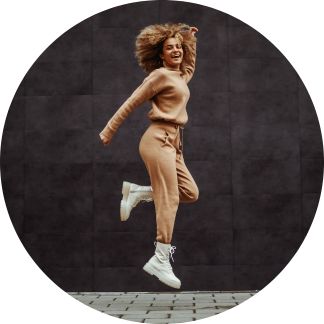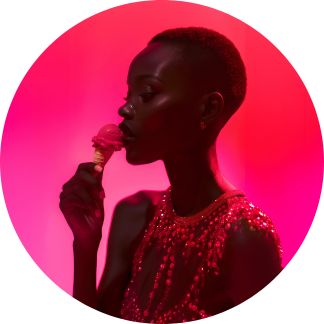K-Fashion Trending: How Gen-Z is Rocking the Global Style Scene

K-Fashion, or Korean fashion, has taken the fashion world by storm in recent years, rapidly ascending to unparalleled levels of popularity and establishing itself as a global phenomenon. Particularly embraced by the younger generation, this trend has captivated fashion enthusiasts and designers worldwide. The meteoric rise of K-Fashion can be attributed to the immense success of Korean pop music, or “K-Pop,” alongside the emergence of a new consumer class, often referred to as the “new rich.” The fusion of vibrant styles and innovative trends has paved the way for K-Fashion to become a true global phenomenon, reflecting a harmonious blend of tradition and modernity that resonates with fashion lovers everywhere.
Photo credit: jechm – stock.adobe.com
K-Fashion: Phenomenon and Diffusion
K-Fashion has a rich and vibrant history behind it, influenced by Korean culture and together inspired by the latest international trends. In a short time, it has gained increasing popularity thanks to its ability to mix traditional elements with a modern and innovative style.
The designers themselves have captured the world’s attention by creating bold and original collections that convey a strong cultural identity.
K-Fashion draws heavily from streetwear, which in turn draws inspiration from the musical hip-hop genre, where garments with soft, ‘cozy’ lines, flashy prints and extravagant accessories stand out. No less important, this type of clothing has given rise to gender fluid fashion, because of its versatility.

Photo credit: BCFC – stock.adobe.com
Among the latest trends closely related to K-Fashion, #couplelook and “Airport fashion” deserve special mention. The #couplelook, as the term suggests, consists of matching one’s outfits with those of one’s partner; it is a very popular trend among young people and is nothing but an open declaration of love to the beloved one.
“Airport fashion”, on the other hand, is a style inspired by airport attire and born with the desire to imitate the dress code of Korean idols, upon their arrival in the destination city of their shows. Also, in this case, clothes that are in vogue are comfortable and colorful, whether it is a set composed of a top/jersey and trousers or simple dresses.
“Koreans have always been fashionable and have known how to dress up,
so now hip hop influenced the way they dress down: beanies, bomber, jackets, sneakers etc.”
– Jessica Ko, IFBK Seoul–
What has contributed to the spread of K-Fashion has undoubtedly been globalization and increasing accessibility through online platforms. Korean brands have embraced e-commerce in a big way, allowing international buyers easy access to the latest collections and trends directly from South Korea. And so, it has made its way across the globe.
K-Pop: A Trend Engine for K-Fashion
K-Pop has played a crucial role in spreading Korean culture globally, and fashion has not been immune to this influence. The idols, as K-Pop artists are called, are not only musical celebrities but also style icons; among the best known are BTS and Blackpink! Their performances on world stages have drawn exponential attention to them, creating growing interest for their eccentricity in hair, make-up and accessories.
Many Korean as well as western fashion brands have exploited this connection between K-Pop and fashion, establishing collaborations with idols to create exclusive collections. These partnerships have proven to be successful, attracting a large K-Pop fanbase eager to emulate the style of their favorite artists.
But why have idols become so popular compared to “canonical” artists? The key lies essentially in the loyalty to one’s idol and the strong sense of belonging to a community: fans become an active part of their idols’ success, not just being simple spectators. Thus, “ARMYs” are born, i.e., organized fanbases that fully embody the values an idol wants to convey; fans feel like part of a family because they are welcomed and understood. The idols themselves, in fact, more and more often expose without fear about their private lives, talking openly about their problems related to anxiety, stress, depression… all issues that are very important to young people and in which, unfortunately, they sometimes recognize themselves.
The strong media exposure of these characters, both on social networks and within television programmers and reality shows, only fuels the attachment of fans. In this sense, storytelling becomes a fundamental element for success among young people.
With these factors in mind, purchasing patterns are also changing. As the very young are more and more oriented towards value experiences, brands have implemented new strategies to lure them into consumption. Thus, pop-up shops are born, small shops where, in addition to high-fashion clothing, it is possible to have real “shopping experiences” that are engaging from a human point of view. Places where the customer feels welcomed, cared for and at the same time can have fun; for example, taking a photo inside a nice photobooth, or receiving a special gift.
To put it simply, brands have realized that in order to stand out in this market, they need to resonate with the values of online audiences who are always seeking something fresh and exciting.
K-Pop Artists and Luxury Brand Testimonials
K-Fashion has seen a significant increase in collaborations between international luxury brands and prominent K-Pop artists. In addition to being style ambassadors, these artists often become testimonials for prestigious fashion brands. Advertising campaigns featuring K-Pop idols contribute to making the brand more appealing to young, fashion-conscious audiences.
This synergy between K-Fashion and luxury brands has led to increased global visibility for both parties involved; K-Pop artists, by wearing iconic garments and participating in world-class fashion events, are able to cement K-Fashion’s reputation on the global stage.
It’s not a coincidence that the above-mentioned BTS launched the Off-White clothing line, created in collaboration with Louis Vuitton in 2015, at the time led by Virgil Abloh, while 2NE1 introduced western brands Givenchy and Balmain to the Korean public. Blackpink’s Lisa and Rose, on the other hand, do not miss the Paris Fashion Week shows every season, to the great approval of the public as well as the most famous international models.
Striking Gold in the K-Fashion Market: The Battle of Luxury Brands and the Rise of the “New Rich“
The rise of the “new rich” in South Korea can be attributed to various factors, including industrialization, technological advancements, and a strong focus on education. These factors have not only propelled economic growth but have also created a segment of society with disposable income and a penchant for luxury consumption. The “new rich” demographic exhibits a distinct affinity for luxury goods, viewing them as status symbols and markers of success in a rapidly evolving society.
As the purchasing power of the “new rich” continues to expand, the K-Fashion market has experienced a considerable boost, with consumers actively seeking out brands that offer exclusivity and prestige. This growing appetite for luxury fashion has attracted the attention of international fashion houses, leading to a burgeoning competition among luxury brands to establish a strong presence in the Korean market. In a bid to appeal to affluent Korean consumers, luxury brands are engaging in strategic collaborations with talented Korean designers and K-Pop artists to leverage their influence and reach within the local market.
The intense competition among luxury brands for a share of the K-Fashion market is palpable, with each brand striving to capture the attention of wealthy consumers through innovative marketing strategies and trendsetting designs. By aligning themselves with Korean talents, luxury brands aim to gain a competitive edge and solidify their position in the fiercely competitive fashion landscape. Moreover, many international fashion houses like: Loewe with SS23 collections, Givenchy, Louis Vuitton, Balmain, Valentino, Prada and many others, have absorbed the essence of rebellion and independence promoted by K-Pop, translating it into images of extreme beauty, which the global audience cannot resist.
By integrating K-Pop influences into their collections, luxury brands have been able to tap into the immense popularity of Korean pop culture and establish a strong connection with a younger, more fashion-forward demographic.

Photo credit: PaulShlykov – stock.adobe.com
Conclusion
In conclusion, K-Fashion has established itself as a global phenomenon in a very short time, winning the hearts and wardrobes of young people all over the world. Its rise has been nourished by the cultural power of K-Pop and the growth of the “new rich” class in South Korea. K-Fashion‘s ability to mix traditional elements with a modern, innovative style has contributed to its international success.
Understanding the preferences and purchasing behavior of affluent Korean consumers is paramount for luxury brands seeking to thrive in this competitive landscape. Looking ahead, the future of the luxury fashion industry in South Korea is poised to be shaped by evolving consumer trends, strategic collaborations, and a continued fusion of Western and Korean aesthetics in an increasingly globalized fashion market.
K-Fashion is not only a manifestation of style, but also a cultural phenomenon that has redefined the dynamics of fashion worldwide, making it more inclusive, innovative and influenced by South Korea’s rich cultural history. With its continuous evolution and increasing consumer attention, K-Fashion looks set to remain an important pillar in global fashion landscape.



